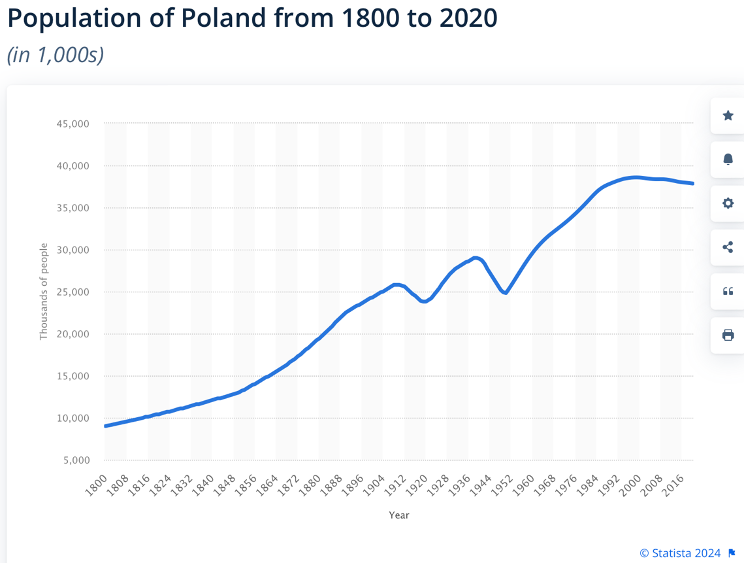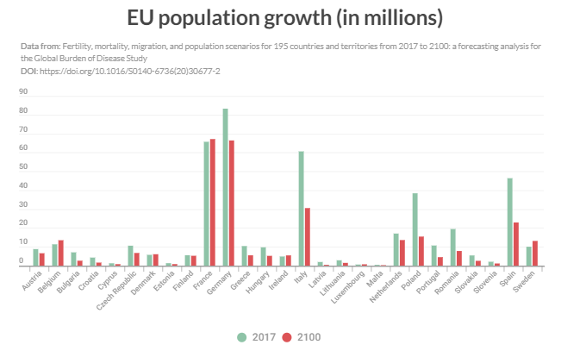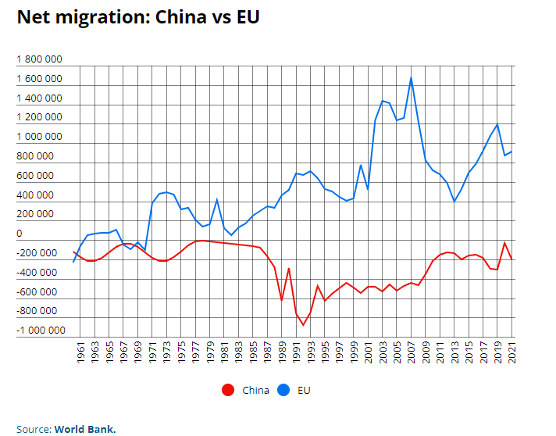S
Subhash Kak
Guest
The Coming Population Collapse — Part 2

Photo by Anatoliy Shostak on Unsplash
First part, here
The data shows that the population is coming down in most countries of the world. In 2023, China reported 9.02 million babies born, which is a new low on record and the seventh year in a row that the number has fallen. Even if 9 million babies were to be born each year for the next 80 years, the population of China at 2100 would be around 700 million.
Given that fertility rate is continuing to fall, and based on the fact that the number of babies born is a function of the dwindling size of the women population in the 15–45 year bracket, the population of China at the end of the century will most likely be half that number.

China shrinking from the current 1.4 billion people to say the extremely optimistic 700 milion in 70 years is extraordinary. It is like a pandemic that strikes only the young, wiping out half the population. Such a decrease has never occurred in history.
Now let us consider one of the larger countries of Europe. The population of Poland in 2022 was 36.82 million people. Its annual live births have gone down from 793,800 in 1955 to 272,000 in 2023, and it is on a downward trajectory. So, if 272,000 births were to take place each year for the next 80 years, the population of Poland in 2100 will be 21.76 million.

We propose that due to the smaller cohorts of women of childbearing age as the population grinds down and due to the decreasing fertility rate, the population will be close to half of the above figure, or 10.8 million, which is less than one third of the current population. The last Poland’s population was this low was in 1832.

The population shifts over the course of the 21st century will have profound geopolitical implications. Some hope that the world may see a peace out of the desire to not squander the youth, for they will be most precious resource in a rapidly aging population. But since the population decline will be widely nonuniform across the globe, it will set off historical migrations that will create extraordinary pressures that most likely will be beyond the capacity of the current socio-political order to deal with.
If the population decline is not properly managed, there will be econoomic devastation and there will be wars.
Collective mind
Projections of future world population use assumptions on future mortality, fertility, migration, and other factors. The overall demographic trends are largely irreversible because they are driven not only by social or economic reasons, but also by more insidious psychological changes arising out of AI, social media, and the breakdown of the family. These factors are weighing on peoples’ minds, which points to even more drastic fertility decrease and population decline than the one forecast by demographers.
There exists a collective mind, that we can see also in the biological sphere as in an ant colony. If the soldier ants are removed from the colony, the queen will produce more of them. Likewise, since the world will need fewer workers for physical or mental work, the world will produce fewer of them.
The push for identification beyond traditional gender may also be coming from the collective mind via the subconscious, for now the traditional gender roles, essential for procreation of the succeeding generation, are not needed to the same degree.
The population decline in many of Europe’s countries over the next few decades will be catastrophic even in the most optimistic scenario (as the one below).

The projection sees Spain, Poland, and Italy at populations less than half of the current numbers. Millions of homes will be abandoned, whole regions will be emptied, schools and businesses will be shuttered.
How will people adjust to a life of loneliness in a world with little job opportunities and no social support? What would they live for? If a large fraction of the population is childless, the emotional need to have houses will lessen, which will hit both banking and real estate markets.

The migration to EU is from cultures that are non-European and inimical to its values. China, on the other hand, has minimal immigration, and, therefore, it will suffer less on this account.
Continue reading...
